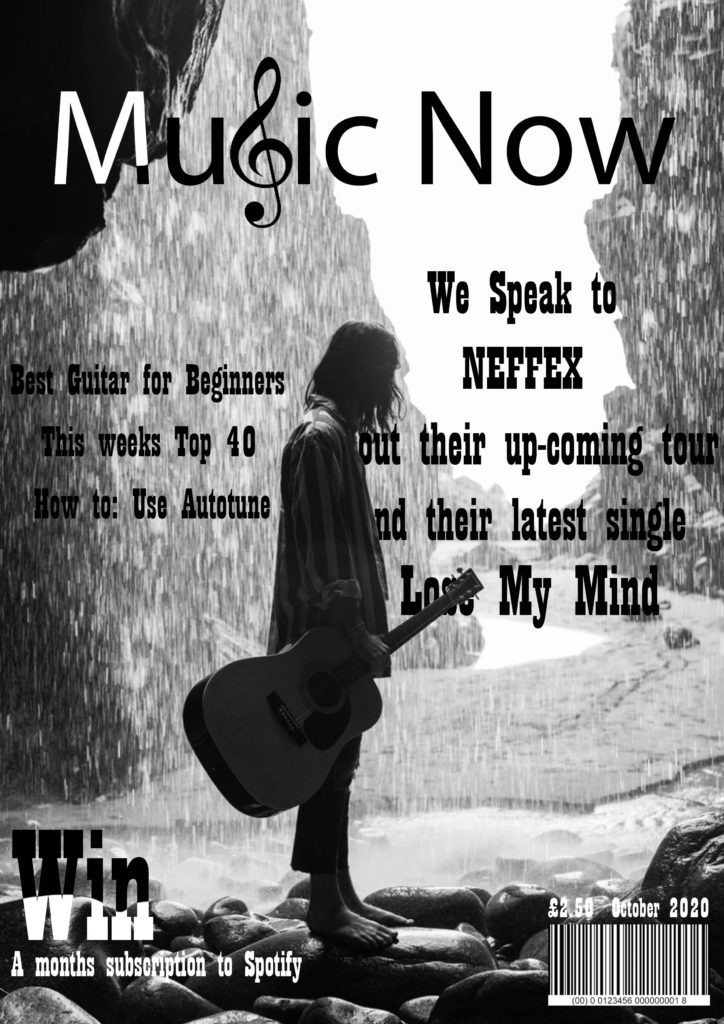

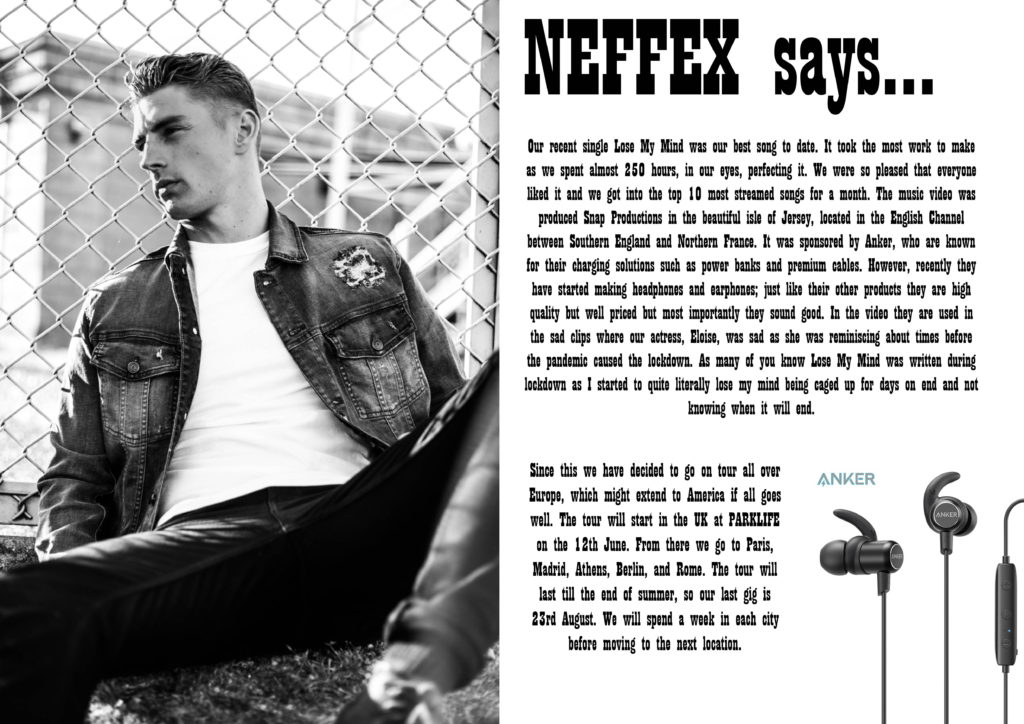



Harold Las swell developed the theoretical tool of “content analysis” and wrote in 1927 Propaganda Technique in World War which highlighted the brew of ‘subtle poison, which industrious men injected into the veins of a staggering people until the smashing powers . . . knocked them into submission’
In 1948, he developed a linear model of communication, that breaks down the line of communication from point A to point B, in which the SENDER is transferring a MESSAGE, through a MEDIUM (e.g print, radio, tv etc) that has a direct effect on the RECEIVER
This model proposes a clear, linear connection between message sent> message received

They suggested the Transmission Model of Communication which includes other features such as NOISE, ERROR, ENCODING and FEEDBACK. This suggests that the process of sending and receiving a message is clear-cut, predicable or reliable and is dependent on a range of other factors that need to be taken into consideration.
They said that Harold’s theory lacks and it is too limited and there is more to it the communication process then what Harold’s model suggests.
Paul recognized a simple, linear model may not be sufficiently complex to understanding the relationship between message sent > message received. He recognized that communication is an active thing
The Two Step Flow model of communication, which took account of the way in which mediated messages are not directly injected into the audience, but while also subject to noise, error, feedback etc, they are also filtered through opinion leaders, those who interpret media messages first and then relay them back to a bigger audience.
The audience are ACTIVE NOT PASSIVE, in that audience consumption is based on consideration of what others think not a PASSIVE process of unthinking consumption.
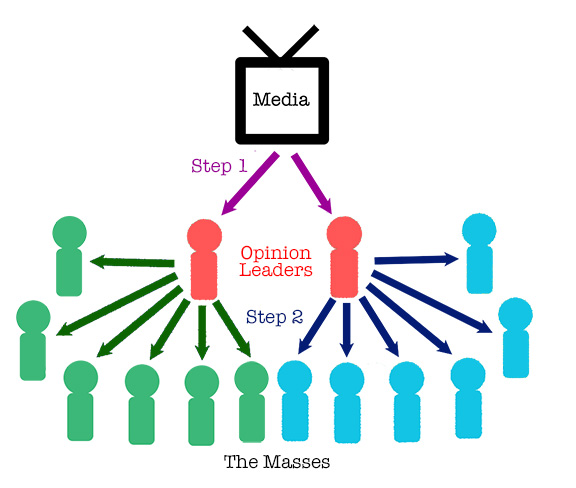
It is the idea of us choosing the media we want and what we listen to. We have a choice of what story we read and we are the reason for what we think. No one is forcing us to buy or watch a media product, we are the reason for how we feel about particular stories. People can be active and pick and choose
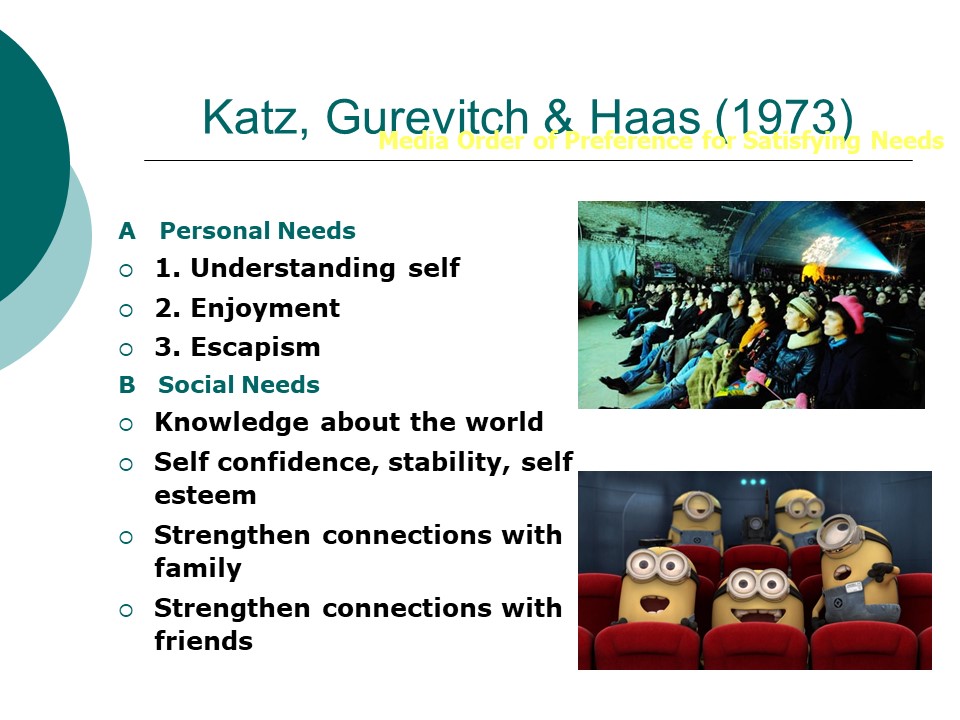
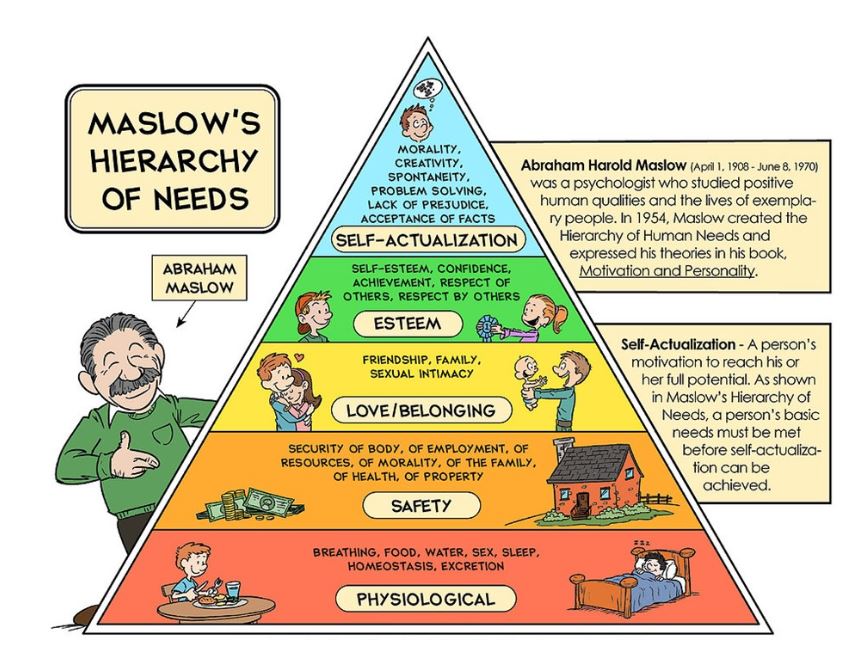
The idea of individual choice and freedom (in terms of the selection, consumption and interpretation of media production) therefore sets up an op positional stance against the idea of state / corporate ‘mind control’ that seeks authority to shape and modify human behavior and interaction. As was highlighted earlier in this post with references to political communication, underpinned by techniques and processes of direct messaging, with intentions of direct ‘hypodermic‘ effect
He believes we think we have free will with what we choose and what media we listen and read, Skinner behavior-modification practices expanded rapidly during the 1960s and 1970s . . . which prescribed a future based on behavioral control, rejecting the very idea of freedom (as well as every tenet of a liberal society)
Chomsky agrees with this ideology from Skinner. Chomsky was very clear that the media operated to support the dominant interests (mainly big business and the political elite) to ‘manufacture consent‘. He believes we have our own ideologies and we have we can be controlled by political interests.
He developed a critical theory that looked to analyse mass media communication and popular culture as a way of both uncovering the invidious work of the State and Big Business, as well as looking for ways of subverting that process. Hall was working at a time of great societal upheaval and unrest in the UK and was therefore committed to understand the relationship between power, communication, culture, control and . . . behavior management.
Hall proposed three distinct positions that could be occupied by individual viewers, determined, more or less on their subject identities. He said you can not be dominated by structures and you can take up 3 readings. He says we can reject media messages and that we can not be brain washed.
He believed there is no mass audience. ‘the more ideas there are in circulation, the more ideas there are for any individual to disagree with.’ In other words, Shirty makes claim for the emancipation gained from new media technologies, liberating individual consumers from the behavioral management techniques of the State that were positioned as problematic by Hall, Husserl, Chomsky and others. He said there no is such thing as audience and we are just individuals
‘it was impossible to imagine the means of behavioral modification as anything other than owned and operated by the government‘. Very few saw that the project would ‘resurface in a wholly unexpected incarnation as a creature of the market, it’s unprecedented digital capabilities, scale, and scope now flourishing under the flag of surveillance capitalism.’
Harold Lasswell, who developed the theoretical tool of ‘content analysis’ and in 1927 wrote Propaganda Technique in the World War which highlighted the brew of ‘subtle poison, which industrious men injectedinto the veins of a staggering people until the smashing powers . . . knocked them into submission’ (link).
As Martin Moore notes, Lasswell, as a behavioural scientist researching areas connected with political communication and propaganda, believed each government had ‘manipulated the mass media in order to justify its actions’ in World War 1 (2019:122).
To illustrate his hypothesis, in 1948 he developed a linear model of communication, one that breaks down the line of communication from point A to point B, in which the SENDER is transferring a MESSAGE, through a MEDIUM (eg Print, radio, TV, etc) that has a direct effect on the RECEIVER.
The Mail on Sunday said “Muscle-flexing Sunak ‘is acting like he is already prime minister” in a right wing tabloid defending the right wing prime minister to the right wing demographic to make Borris seem he has the cover stats and the cover cure compared to cartoon Sunak who is left wing.

Shannon and weaver said that not everything is communicated and there is hidden secrets and a manipulated truth as everything is much more complicated then it seems
At the same time Paul Lazarfeld recognised that a simple, linear model may not be sufficiently complex to understanding the relationship between message sent > message received. As such, in 1948 he developed the Two Step Flow model of communication, which took account of the way in which mediated messages are not directly injected into the audience, but while also subject to noise, error, feedback etc, they are also filtered through opinion leaders, those who interpret media messages first and then relay them back to a bigger audience.

The distinction is this approach is rather than categorising the audience as passive consumers of messages, either directly from source, or from opinion leaders, this theory recognises the decision making process of the audience themselves. As Elihu Katz explains the Uses and Gratifications theory diverges from other media effect theories that question: what does media do to people?, to focus on: what do people do with media?
Research into this area began with Denis McQuail and Jay Blumler, who in 1969, looked to study the 1964 UK Election. In the early 1970’s they were joined by Elihu Katz, Joseph Brown, Michael Gurevitch and Hadassah Haas.
In essence, they put forward research to show that individual audience members are more active than had previously been thought and were actually key to the processes of selection, interpretation and feedback. In essence, individuals sought particular pleasures, uses and gratifications from individual media texts, which can be categorised as:
Or categorised as: diversion, personal relationships, personal identity and surveillance.

4. Cultivation Theory – effects over time
George Gerbner, Larry Gross and others worked on a large-scale, positivist, in-depth, longitudinal study into the effects of television, which started in 1975. Looking primarily at the relationship between violence on television and violence in society. They developed what is known as CULTIVATION THEORY, noting the distinct characteristics of television in relation to other media forms, they suggest that ‘television cultivates from infancy the very predispositions and preferences that used to be acquired from other primary sources‘ (Gerbner et al 1986). In other words, television shapes the way individuals within society think and relate to each other. However, the research also notes that the effects of television are limited and as such, the overall position is that ‘watching television doesn’t cause a particular behavior, but instead watching television over time adds up to our perception of the world around us‘ (cited in West, 2014).
More pertinently, Gerbner and Gross assert that ‘television’s major cultural function is to stabilize social patterns and to cultivate resistance to change‘ (1978: 115). In other words, they assert the power of television to modify behaviour in support of the dominant structures of society.
At around the same time Stuart Hall, working at the Centre for Contemporary Cultural Studies (CCCS), at the University of Birmingham, was also developing a critical theory that looked to analyse mass media communication and popular culture as a way of both uncovering the invidious work of the State and Big Business, as well as looking for ways of subverting that process. Hall was working at a time of great societal upheaval and unrest in the UK (read this article as a useful insight) and was therefore committed to understand the relationship between power, communication, culture, control and . . . behaviour management.
As presented earlier, ‘where other media theorists argue that messages are imposed on people from above, Hall said power is not as simple as that‘. Hall suggested that power, control and therefore, behaviour management cannot be exerted directly, willfully and without resistance. Towards this aim he proposed the encoding/decoding model of communication, or the theory of preferred reading, where individuals are not only active in the process of interpretation and the construction of meaning, but they are also able to dismiss and reject dominant messages. Although it could be argued that we all take up different readings of different media, Hall proposed three distinct positions that could be occupied by individual viewers, determined, more or less on their subject identities.
To bring this summary of different audience approaches towards a conclusion, would be to look at Clay Shirky‘s notion of the end of audience. Because what could happen if, instead of the choice of three subject positions as offered by the theory of preferred reading, there were limitless, individual subject positions available to all of us, at any time, in any place, from any perspective? A position which allowed us to produce our commentary and communication on the outside world, while still maintaining the ability to comment, feedback, accept or deny those who choose to interpret the outside world for us?
In many ways, Shirky is not too removed from the work of Hall, prioritising the power of individual agency in the relationship between audiences and institutions, for example, recognising how the audience can be both producers and consumers of media text. This can be realised in the realm of new (interactive) communication media, where individual communications can be made in what appears to be beyond State or commercial control and interest.
In a TED talk from 2013, Shirky stated that, ‘the more ideas there are in circulation, the more ideas there are for any individual to disagree with.’ In other words, Shirky makes claim for the emancipation gained from new media technologies, liberating individual consumers from the behavioural management techniques of the State that were positioned as problematic by Hall, Althusser, Chomsky and others. A position that is the revolution of new media technologies, which in many holds similarities with the introduction of the printing press in the 1500’s, a potential to transform the working machinery of public discourse and to reinvigorate democracy (re: Habermas and the Transformation of the Public Sphere).
1920 – 30: Lasswell Hypodermic




1960s – 70s –
Skinner ~( behavioral conditioning )
institutions will appeal to what people want – if people want stuff about trump, they will fill the newspapers with trump, to satisfy the personal needs
cultivation theory – changing behavior over time ( george Gerbner)
‘television cultivates from infancy the very predispositions and preferences that used to be acquired from other primary sources
‘television’s major cultural function is to stabilize social patterns and to cultivate resistance to change‘
watching television over time adds up to our perception of the world around us
cultivates predispositions and preferences
Althusser – theory of interpellation
1980s – The theory of preffered reading
2000s – Clay Shirky – the end audience – theres no such thing as a mass audience – only indivual audiences
‘the more ideas there are in circulation, the more ideas there are for any individual to disagree with.’
2019 – Zuboff – suvailence capitalism
Structure (institutions) is more important and have more power over individual agents = structure over agency
Lasswell –
Media has a direct and powerful influence
1920-30 – Hypodermic needle theory. In 1927 wrote Propaganda Technique in the World War which highlighted the brew of ‘subtle poison, which industrious men injected into the veins of a staggering people until the smashing powers . . . knocked them into submission’
Linear model of communication –
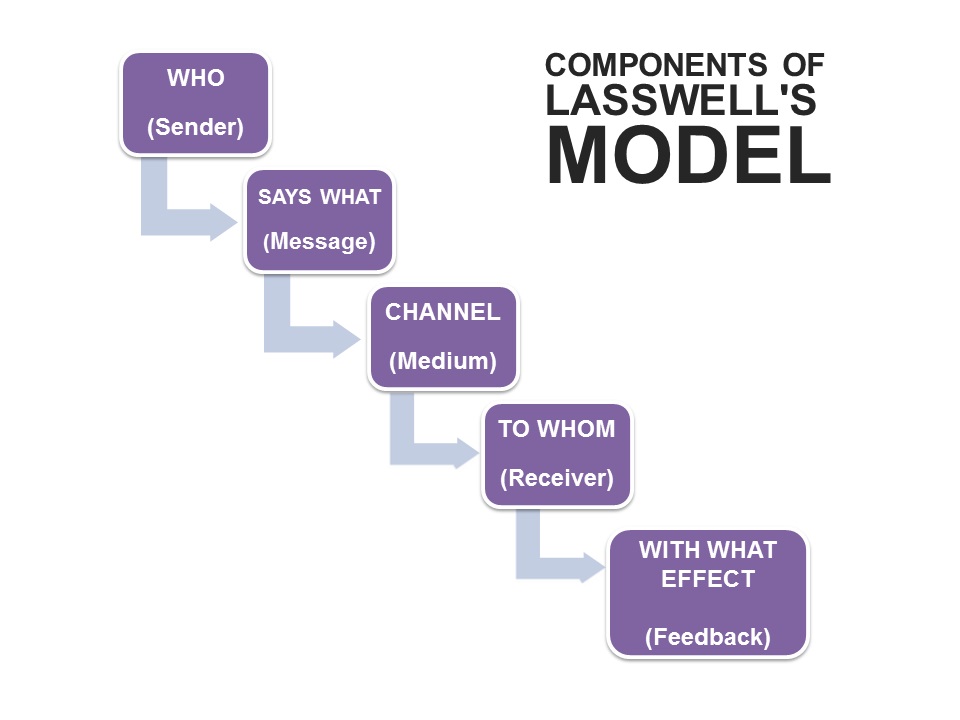
Who – Larlsa Brown
Says What – How British spies exposed and disrupted Russia’s cyber war on the Olympics ‘A Russian pilot to sabotage the Olympic games.
Channel – Article in the Daily Mail, Page 3
To Whom – British Public. main target audience of middle aged women
With What Effect – Captures attention easily, possibly false or more extreme/ exaggerated news
Editorial – What the newspaper/ Editor truly thinks
1949 – Shannon + Weaver
Transmission model of Communication, which included other elements, such as NOISE, ERROR, ENCODING and FEEDBACK. In other words, there is the suggestion that the process of sending and receiving a message is clear-cut, predicable or reliable and is dependent on a range of other factors that need to be taken into consideration. Theres more than just utterances between two people as communication is not that simple and may read it in a different way. Decoding and interpreting is different in different individuals. (criticise Laswells model)
1948 Paul Larzafeld – 2 step flow of communication
More likely to be influenced by others rather than institutions or media, meaning that the audience is active.
He recognised that a simple, linear model may not be sufficiently complex to understanding the relationship between message sent and message received.
. As such, in 1948 he developed the Two Step Flow model of communication, which took account of the way in which mediated messages are not directly injected into the audience, but while also subject to noise, error, feedback etc, they are also filtered through opinion leaders, those who interpret media messages first and then relay them back to a bigger audience.
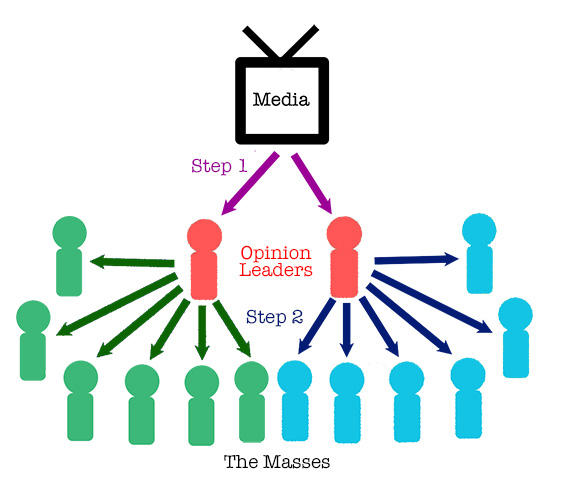
1960s Uses + Gratification – McQuail, Blumler and Katz
In essence, they put forward research to show that individual audience members are more active than had previously been thought and were actually key to the processes of selection, interpretation and feedback. In essence, individuals sought particular pleasures, uses and gratifications from individual media texts, which can be categorised as:
Or categorised as: diversion, personal relationships, personal identity and surveillance.
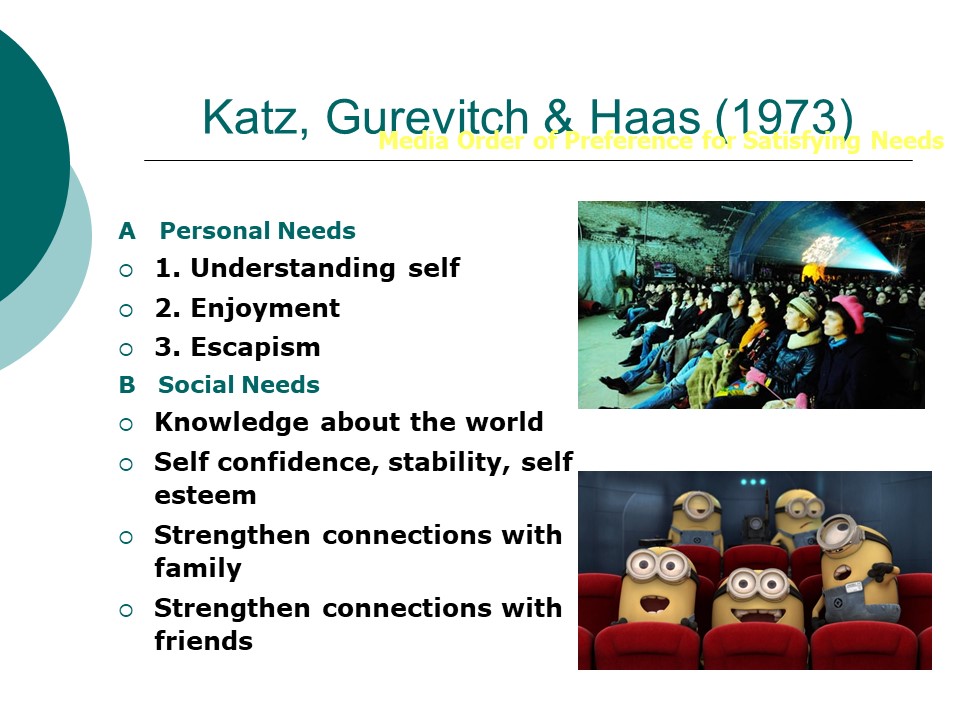
Uses and Gratifications is also linked into Maslow’s hierarchy of needs as the audience is active. Argues that people actively looked to satisfy their needs based on a hierarchy of social and psychological desires.
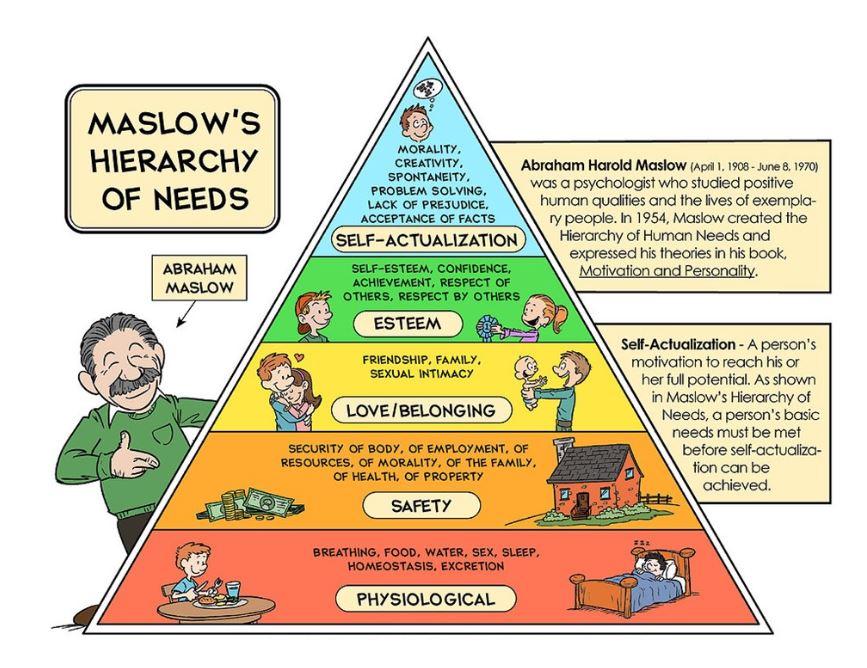
1970s Gerbner
Cultivation theory suggests that exposure to media, over time, subtly “cultivates” viewers’ perceptions of reality. Gerbner and Gross assert: “Television is a medium of the socialization of most people into standardized roles and behaviours. Its function is in a word, enculturation”. Behaviour can be changed over time via exposure.
Cultivates predispositions and purposes.
Skinner VS Chomsky
Behaviourist VS Nativist
Skinner = conditioning
1980s Stuart Hall Theory of Preferred Reading
Stuart Hall = Black Academic = ‘The world is looking very white’
A critical theory that looked to analyse mass media communication and popular culture as a way of both uncovering the invidious work of the State and Big Business, as well as looking for ways of subverting that process. Hall was working at a time of great societal upheaval and unrest in the UK
Hall suggested that power, control and therefore, behaviour management cannot be exerted directly, wilfully and without resistance. Towards this aim he proposed the encoding/decoding model of communication, or the theory of preferred reading, where individuals are not only active in the process of interpretation and the construction of meaning, but they are also able to dismiss and reject dominant messages. Although it could be argued that we all take up different readings of different media, Hall proposed three distinct positions that could be occupied by individual viewers, determined, more or less on their subject identities.
This view presents people as producers and consumers of culture at the same time. It means they are active in the making (or rejecting) of meaning through mass communication
2000s Clay Shirky End of Audience
In many ways, Shirky is not too removed from the work of Hall, prioritising the power of individual agency in the relationship between audiences and institutions, for example, recognising how the audience can be both producers and consumers of media text. This can be realised in the realm of new (interactive) communication media, where individual communications can be made in what appears to be beyond State or commercial control and interest.
Shirky stated that, ‘the more ideas there are in circulation, the more ideas there are for any individual to disagree with.’ In other words, Shirky makes claim for the emancipation gained from new media technologies, liberating individual consumers from the behavioural management techniques of the State that were positioned as problematic by Hall, Althusser, Chomsky and others.
No mass audience only an individual mass audience
Links into intersectionality, an intersection of different subject positions – we are all fragmented and different, just a combination of thoughts, ideas and influences.
2019 edition – Zuboff – Surveillance Capitalism
Today’s means of behavioural modification are aimed unabashedly at “us.” Everyone is swept up in this new market dragnet, including teh pscyhodramas ofordinary, unsuspecting fourteen-year-olds approaching the weekend with anxiety. Every avenue of connectivity serves to bolster private power’s need to seize behaviour for profit. Where is the hammer of democracy now, when the threat comes from your phone, your digital assistant, your Facebook login? Who will stand for freedom now, when Facebook threatens to retreat into the shadows if we dare to be the friction that disrupts economies of action that have been carefully, elaborately, and expensively constructed to exploit our natural empathy, elude our awareness, and circumvent our prospects for self-determination? If we fail to take notice, how long before we are numb to this incursion and to all the incursions? How long until we notice nothing at all? How long before we forget who we were before they owned us . . . (p. 326)
Zuboff
Curran and Seaton – power and media industries theory. Their theory follows the idea that the free press doesnt really exist as Media industries follow the normal capitalist pattern of increasing the concentration of ownership, with one ultimate conglomerate owning multiple subsections and creating less and less diversity. This leads to a narrowing of the range of opinions represented in the media and there is a pursuit of profit at the expense of quality or creativity.
The media needs a form of regulation or they can post whatever they want and it won’t matter if it’s real or not so we have a filter what media goes through also known as “flack” so the government could stop negative information against them to never be published for the public as well as watchdogs who are mainly anonymous people who keep an eye out for the public to ensure there is no corrupt people or media. FREE PRESS should be free from interference and be impartial/transparent.
who= Andrew Pierce wrote in the Daily Mail on Monday 19th October 2020
Says what= Mocking left wing politics
Shannon and Weaver in 1949- developed and criticized the model of communication
Paul Lazarfeld recognised that a simple, linear model may not be sufficiently complex to understanding the relationship between message sent > message received. he developed the Two Step Flow model of communication, messages are not directly injected into the audience, but while also subject to noise, error, feedback etc, they are also filtered through opinion leaders, those who interpret media messages first and then relay them back to a bigger audience.
Cultivation Theory George Gerbner,Looking primarily at the relationship between violence on television and violence in society. They developed what is known as CULTIVATION THEORY, noting the distinct characteristics of television in relation to other media forms, they suggest that ‘television cultivates from infancy the very predispositions and preferences that used to be acquired from other primary sources‘ In other words, television shapes the way individuals within society think and relate to each other.
The Theory of Preferred Reading- Stuart Hall, developing a critical theory that looked to analyse mass media communication and popular culture as a way of both uncovering the invidious work of the State and Big Business, as well as looking for ways of subverting that process. Hall suggested that power, control and therefore, behaviour management cannot be exerted directly, willfully and without resistance. Towards this aim he proposed the encoding/decoding model of communication, or the theory of preferred reading, where individuals are not only active in the process of interpretation and the construction of meaning, but they are also able to dismiss and reject dominant messages.
Sender: Max Aitchison
Says What: The labour leader Corbyn Crony who thinks it’s a good idea to remove UK Road Signs
Channel: Daily Mail
Shannon and Weaver in 1949, what they did was develop and criticise the Lasswell’s Model. The model that is presented isn’t necessarily accurate.
Two Step Flow of Communication (active consumption)
At the same time Paul Lazarfeld recognised that a simple, linear model may not be sufficiently complex to understanding the relationship between message sent > message received. As such, in 1948 he developed the Two Step Flow model of communication, which took account of the way in which mediated messages are not directly injected into the audience, but while also subject to noise, error, feedback etc, they are also filtered through opinion leaders, those who interpret media messages first and then relay them back to a bigger audience.

Audience are ACTIVE NOT PASSIVE
Uses and Gratifications (active selection)
The distinction is this approach is rather than categorising the audience as passive consumers of messages, either directly from source, or from opinion leaders, this theory recognises the decision making process of the audience themselves.
n essence, they put forward research to show that individual audience members are more active than had previously been thought and were actually key to the processes of selection, interpretation and feedback. In essence, individuals sought particular pleasures, uses and gratifications from individual media texts, which can be categorised as:


My newspaper story is about getting rid of UK road signs fits into the social needs section because this is able to give you a better understanding of what is happening in the world and around you.
Cultivation Theory – effects over time . . .

George Gerbner, Larry Gross and others worked on a large-scale, positivist, in-depth, longitudinal study into the effects of television, which started in 1975. Looking primarily at the relationship between violence on television and violence in society. They developed what is known as CULTIVATION THEORY, noting the distinct characteristics of television in relation to other media forms, they suggest that ‘television cultivates from infancy the very predispositions and preferences that used to be acquired from other primary sources‘ (Gerbner et al 1986). In other words, television shapes the way individuals within society think and relate to each other.
The Theory of Preferred Reading
At around the same time Stuart Hall, working at the Centre for Contemporary Cultural Studies (CCCS), at the University of Birmingham, was also developing a critical theory that looked to analyse mass media communication and popular culture as a way of both uncovering the invidious work of the State and Big Business, as well as looking for ways of subverting that process.

Clay Shirky: The End of Audience
To bring this summary of different audience approaches towards a conclusion, would be to look at Clay Shirky‘s notion of the end of audience. Because what could happen if, instead of the choice of three subject positions as offered by the theory of preferred reading, there were limitless, individual subject positions available to all of us, at any time
“The more ideas there are in circulation, the more ideas there are to disagree with”
B.F. Skinner – Operant conditioning
“The fiction of free will?”
Schedule of reinforcement
Harold Lasswell, Propaganda Technique in the world war (1927)
‘injected into the veins’ ‘a subtle poison’
propaganda is overtly political and manipulative. Persuasion is subsequently revealed as invidious
Shoshana Zuboff – Emerging behavioural control technology (mobile phones).
Uncovering Cambridge Analytica – Alexander Nix
Will Hazell (Who) wrote that “People want schools and nurseries open in second lockdown” (Message). This was written in the i newspaper (Medium). This message is read by the readers of the i (Receiver). The effect of the message would be that people understand that children need schools and nurseries open. (Effect)
Shannon and Weaver in 1949 (Transmission model of Communication)
Paul Lazerfeld – Two step flow of communication. Social media influencers. messages are not directly injected into the audience. those who interpret media messages first and then relay them back to a bigger audience. The role of key individuals in society, teachers, doctors, trade union leaders, your boss at work, parents, friends and family all of whom are capable of exerting an influence on the process of communication, making it subject to bias, interpretation, rejection, amplification, support and change.
Audiences are active, who should they listen to, who should they believe.
Uses and Gratifications – Education, Entertainment, Social interaction, identity, escapism. Personal needs and social needs. what does media do to people? what do people do with media?
Maslows hierarchy of needs. Self actualization, Esteem, Love/belonging, Safety, Psychological.
George Gerbner – Cultivation Theory examines the long-term effects of television. Changing behaviour overtime.
Chomsky and Althusser tell us that companies do the exact same thing.
Theory of preferred reading – Stuart Hall. Talks about how you don’t have to believe everything you are told. A dominant position accepts the dominant message. A negotiated position both accepts and rejects the dominant reading. An oppositional position rejects the dominant reading
Clay Shirky – There isn’t such a thing as audience, there are only individuals.
B.F Skinner – Operant Conditioning (Behavioural Science)
The notion of free will is fiction. “The fiction of free will”
Actions are shaped by controlling the environment
Schedule of reinforcement
Propaganda vs Persuasion
Harold Lasswell – Propaganda technique in the world war (1927) – The brew of ‘subtle poison which industrious men injected into the veins of a staggering people until the smashing powers….knocked them into submission’
Shoshana Zuboff
The age of surviving capitalism
Individuality & Personal freedom v Behaviour modification
Cambridge Analytica – Alexander Nix
WHO, SAYS WHAT, THROUGH WHAT CHANNEL, TO WHOM, TO WHAT EFFECT
Who – Will Hazell
Says What – People want schools and nurseries to be open during second lockdown, says poll
Channel – The i
To Whom – centralists (due to political and general viewpoint of The i)
With what effect- To inform the readers about others viewpoint
Shannon and Weaver – 1949
Developed Laswell’s model to Transmission model of Communication. This included elements such as noise, error, encoding and feedback.
Paul Lazarfeld – 1950(ish)
He developed the Two Step flow model of communication. The role of key individuals in society all of whom are capable of exerting an influence on the process of communication. This makes it subject to bias, interpretation, rejection, amplification, support and change.

Audiences are active not passive. Audience consumption is based on consideration of what others think.
Uses and Gratifications – 1960’s
Rather than categorising the audience as passive consumers of messages, either directly from source or from opinion leaders.
& Maslow’s hierarchy of needs (1954)
It argues that people actively looked to satisfy their needs based on a hierarchy of social and psychological desires
George Gerbner – 1970’s
Cultivation theory – “television cultivates from infancy the very predispositions and preferences that used to be acquired from other primary sources” – (television shapes the way individuals within society think and relate to each other)
Stuart Hall – 1980’s
The theory of preferred reading.
Clay Shirky – 2000’s
Instead of the choice of three subject positions as offered by the theory of preferred reading, there were limitless, individual subject positions available to all of us, at any time, in any place, from any perspective?
Says there are no audiences, but individuals – not the same but target each one for their needs.
A position which allowed us to produce our commentary and communication on the outside world, while still maintaining the ability to comment, feedback, accept or deny